
The Society for Psychical Research (SPR) is a nonprofit organisation in the United Kingdom. Its stated purpose is to understand events and abilities commonly described as psychic or paranormal. It describes itself as the "first society to conduct organised scholarly research into human experiences that challenge contemporary scientific models." It does not, however, since its inception in 1882, hold any corporate opinions: SPR members assert a variety of beliefs with regard to the nature of the phenomena studied.

Spiritualism is a social religious movement primarily popular in the nineteenth and early twentieth centuries according to which an individual's awareness persists after death and may be contacted by the living. The afterlife, or the "spirit world", is seen by spiritualists not as a static place, but as one in which spirits continue to evolve. These two beliefs—that contact with spirits is possible, and that spirits are more advanced than humans—lead spiritualists to the belief that spirits are capable of providing useful insight regarding moral and ethical issues, as well as about the nature of God. Some spiritualists speak of a concept which they refer to as "spirit guides"—specific spirits, often contacted, who are relied upon for spiritual guidance. Emanuel Swedenborg has some claim to be the father of spiritualism.

The National Laboratory of Psychical Research was established in 1926 by Harry Price, at 16 Queensberry Place, London. Its aim was "to investigate in a dispassionate manner and by purely scientific means every phase of psychic or alleged psychic phenomena". The honorary president was Lord Sands, K.C., LL.D., acting president was H. G. Bois, and the honorary director was Harry Price. In 1930 the Laboratory moved from Queensberry Square, where it had been a tenant of the London Spiritualist Alliance to 13 Roland Gardens. In 1938, its library was transferred on loan to the University of London.
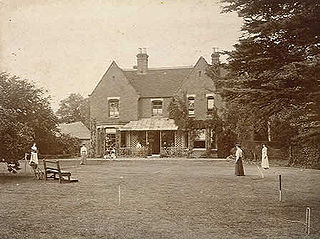
Borley Rectory was a house located in Borley, Essex, famous for being described as "the most haunted house in England" by psychic researcher Harry Price. Built in 1862 to house the rector of the parish of Borley and his family, the house was badly damaged by fire in 1939 and demolished in 1944.

Harry Price was a British psychic researcher and author, who gained public prominence for his investigations into psychical phenomena and exposing fraudulent spiritualist mediums. He is best known for his well-publicised investigation of the purportedly haunted Borley Rectory in Essex, England.

Sir William Fletcher Barrett was an English physicist and parapsychologist.

The Enfield poltergeist was a claim of supernatural activity at 284 Green Street, a council house in Brimsdown, Enfield, London, England, between 1977 and 1979. The alleged poltergeist activity centred on sisters Janet, aged 11, and Margaret Hodgson, aged 13.
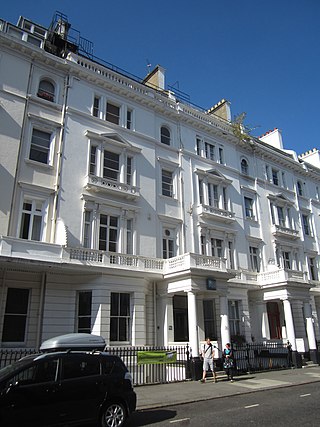
The College of Psychic Studies is a non-profit organisation based in South Kensington, London. It is dedicated to the study of psychic and spiritualist phenomena.

Ghost hunting is the process of investigating locations that are purportedly haunted by ghosts. Typically, a ghost-hunting team will attempt to collect evidence supporting the existence of paranormal activity.

Peter Underwood was an English author, broadcaster and parapsychologist. Underwood was born in Letchworth, Hertfordshire. Described as "an indefatigable ghost hunter", he wrote many books which surveyed alleged hauntings within the United Kingdom - beginning the trend of comprehensive regional 'guides' to (purportedly) haunted places. One of his well-known investigations concerned Borley Rectory, which he also wrote about.
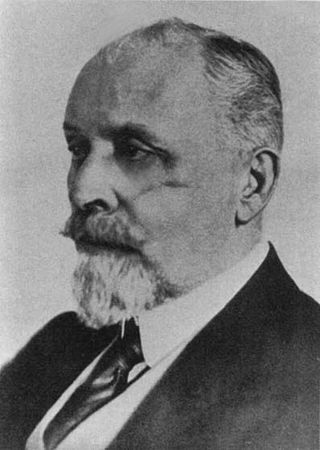
Albert Freiherr von Schrenck-Notzing was a German physician, psychiatrist and notable psychical researcher, who devoted his time to the study of paranormal events connected with mediumship, hypnotism and telepathy. He investigated Spiritualist mediums such as Willi Schneider, Rudi Schneider, and Valentine Dencausse. He is credited as the first forensic psychologist by Guinness World Records.

Rudi Schneider, son of Josef Schneider and brother of Willi Schneider, was an Austrian Spiritualist and physical medium. His career was covered extensively by the Journal of the American Society for Psychical Research, and he took part in a number of notable experiments conducted by paranormal researchers/debunkers, including Harry Price, Albert von Schrenck-Notzing and Eric Dingwall. Some of these researchers declared him to be a fraud while others were unable to find evidence of trickery.
Guy Lyon Playfair was a British writer, best known for his books about parapsychology and his investigation of the Enfield poltergeist.
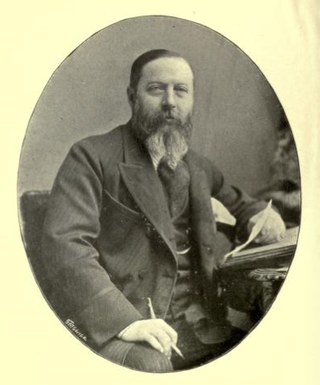
William Stainton Moses was an English cleric and spiritualist medium. He promoted spirit photography and automatic writing, and co-founded what became the College of Psychic Studies. He resisted scientific examination of his claims, which have generally been demolished.
Leo Ruickbie is a British historian and sociologist of religion, specializing in exceptional experiences, paranormal beliefs, magic, witchcraft and Wicca. He is the author of several books, beginning with Witchcraft Out of the Shadows, a 2004 publication outlining the history of witchcraft from ancient Greece until the modern day. Ruickbie was born in Scotland and took a master's degree in Sociology and Religion at the University of Lancaster. He then studied at King's College London and was an awarded a PhD for his thesis entitled The Re-Enchanters: Theorising Re-Enchantment and Testing for its Presence in Modern Witchcraft. On Samhain 2007 he launched Open Source Wicca, a project inspired by the open-source software movement aimed at making the founding texts of Wicca more readily available by releasing them under a Creative Commons licence. In 2008 and 2009 he exhibited on the subject of witchcraft in France. He is also a council member of the Society for Psychical Research, a professional member of the Parapsychological Association, the European Society for the Study of Western Esotericism, is on the committee of the Gesellschaft für Anomalistik. In 2021, he was elected a Fellow of the Royal Historical Society and in 2022 a Fellow of the Royal Anthropological Institute. He is the current editor of the Magazine of the Society for Psychical Research.

Eva Carrière, also known as Eva C, was a fraudulent materialization medium in the early 20th century known for making fake ectoplasm from chewed paper and cut-out faces from magazines and newspapers.

The Association for the Scientific Study of Anomalous Phenomena (ASSAP) is a United Kingdom-based learned society, education and research charity, dedicated to scientifically investigate alleged paranormal and anomalous phenomena, with a view to approaching the subject in its entirety rather than looking into the psychology of individual phenomenon. They also hold training days for would-be investigators and provide research grants.

Andrew Green was a British author and ghost hunter known by the media as "the Spectre Inspector". Although Green never claimed to have definitively seen a ghost, he hunted them for 60 years and helped to popularise the use of scientific methods in ghost hunting. He once famously hunted for ghosts in the Royal Albert Hall.
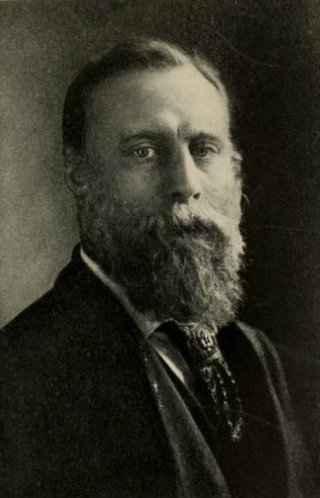
Richard Hodgson was an Australian-born psychical researcher who investigated spiritualist mediums such as Eusapia Palladino and Leonora Piper. During his later life, Hodgson became a spiritualist medium himself and believed to be in communication with spirits.
The Cheltenham Ghost was an apparition said to haunt a house in Cheltenham in western England. The building in Pittville Circus Road was the home of the Despard family who saw the ghost of a veiled woman on several occasions in the 1880s.

















